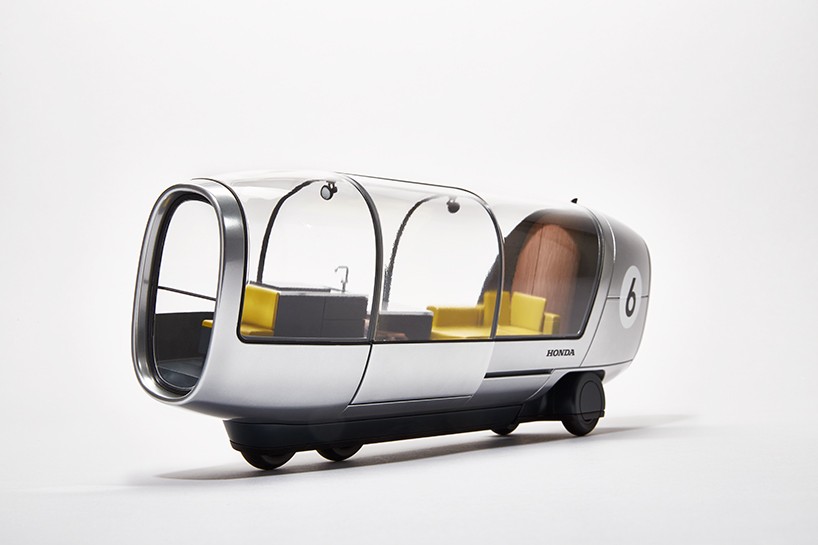Gov. Hickenlooper of Colorado declared Monday, Dec. 4th to be
Connected and Autonomous Vehicle (AV) Day. No word on store sales for that holiday. Part of Hickenlooper's C-and-AV Day photo op was to showcase Colorado's upcoming AV pilot project.
The declaration of the special day was a way for the pro-AV governor - whose administration paved the way for the
driverless truck beer delivery PR stunt - to continue to highlight AV partners and Colorado's enthusiasm.
According to the
press release, in very press-release-y language:
"Panasonic, a global leader in smart cities and smart automotive technology solutions, welcomed Colorado Governor John Hickenlooper, Denver offices, where he proclaimed December 4 as "Connected and Autonomous Vehicle Day" to reinforce initiatives like Panasonic's connected vehicle partnership with CDOT's RoadX Program, as well as acknowledge EasyMile, a leader in autonomous technology, for their North American headquarters grand opening co-located within the Panasonic building."
Best of luck to Lauren Isaac of EasyMile as she awaits the birth of her baby. By the time that baby is a teenager, he or she will never need a driver's license. My own kids told me about six years ago that their generation would be the last for that.
Other EasyMile news is that the company is graduating, or rather expanding, from cute AV shuttles to real buses, AVs, of course.
EasyMile is partnering with the French government and "IVECO, Sector, Transpolis, ISAE-SUPAERO, Ifsttar, Inria, and Michelin" to produce the AV buses. The buses will be large enough to transport 100+ passengers. (A warning to all of you traveling with more than one small child: Whether or not a bus has a driver, get on at a stop where you can sit together and where you do not have to stand holding a child of 30 pounds or one wearing a snow suit. AVs will not solve every transportation conundrum.)
Watch this
nice video of the EasyMile AV shuttle at Bishop Ranch office park in California, being piloted in a partnership with the Contra Costa Transportation Authority.
In the state where everyone believes every visitor wants to move there
Look at the cute Colorado license plate for the EasyMile AV shuttle. It will be spring 2018 before regular passengers can get on board to ride the
first-mile/last-mile route near Denver's 61st and Peña Station. Political and business partners came out to shine anyway for the early dog and pony show on Monday.
Perfect would be taking that shuttle from the commuter bus stop near Louisville, CO (near Boulder) to the
Moxie Bread Company hipster bakery and coffee place. It's a Denver transit bus, so why not?
[Off topic: Moxie bialys are nowhere near the real thing, but their whole grain, naturally-leavened bread is excellent. In the bialy/bagel realm, I remain true to my pre-hipster Brooklyn roots.]
Pilots popping up everywhere
Nissan will be
starting a pilot in Japan for app-based AV ridehailing. Will start with only two Nissan Leaf electric vehicles. The pilot will begin in March 2018.
Lyft riders in
Boston's Seaport neighborhood may be experiencing AV ridehailing trips due to a pilot program and a partnership between Lyft and
nuTonomy. Delphi owns nuTonomy, which has experience in Singapore with AV pilots.
Previous posts about nuTonomy activity in Singapore:
AV ridehailing in 2018; Singapore is a
driverless sandbox; plus
more posts about AV activity in Singapore.
Will vans be cool again?
The company first known for its cool vans is trying to climb back to regain that reputation. Volkswagon has developed an
AV van called MOIA that will be launched as the vehicle for a ridehailing service. "The van-pooling MOIA service will launch in Hamburg in 2018 with 200 vans, letting passengers enter a departure point and destination in an app. "We've set ourselves the goal of taking more than a million cars off the roads in Europe and the USA by 2025," said MOIA CEO Ole Harms."
FYI: No flower power on these sleek, corporate-looking VW vans.
Fiskers has also
developed an AV shuttle called Orbit and its shape varies from the cute boxy design of other companies. No word on when this van-like shuttle vehicle will appear on roads or where it will launch.
School bus without driver
So, I hope parents are aware that school bus drivers do not actually supervise children who ride the bus. I mostly walked my kids to school up to high school, but I overheard plenty of kid conversations about school bus rides.
The
AV school bus design, named Hannah, crafted by the Teague design firm is cute. The affluent-and-white world portrayed in the photographs suggests a crime-free, suburban paradise. In the real world, perhaps parent volunteers would be needed up to high school, especially in the prime cliquey years of fourth grade through middle school.









